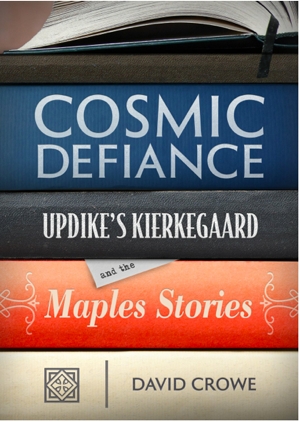In “Controlled Rapture” (September 15, 2014), which is not available through open-access online yet, William Deresiewicz reviews Begley’s Updike for The New Republic. Though he has some very nice things to say about Updike, he begins, curiously, with the (some might think flawed) assumption that Updike’s literary star is currently dim, tarnished, or falling. Ignoring the large volume of major newspapers and critics who continue to assess Updike as one of the great writers of his century, Deresiewicz instead trots out Harold Bloom’s “oft-quoted remark that Updike was ‘a minor novelist with a major style'”—a great sound-byte in an era that feeds off of them—and David Foster Wallace’s decades-old indictment of Updike and the white male literary establishment in an essay many dismissed as the howl of a young buck trying to take on the alpha male(s) during rutting season.
“Only time will tell if Begley’s book becomes a final send-off or the start of its subject’s rehabilitation,” Deresiewicz continues. “Neither, I suspect. Updike’s prospects, in the near term, do not look any brighter than they did around the time that Wallace dropped his bomb in 1997 (or than those of Mailer and Roth, the other ‘phallocrats’ he named in his indictment). Our cultural politics are still pretty much where they were at the time: shackled to our identity politics. But Updike strikes me as the kind of writer who is going to be rediscovered, and who is going to keep being rediscovered. The time will come—in thirty or fifty or a hundred years—when the values of our own effulgent age will seem as odious as those of the 1950s (or for that matter, of the 1850s) do to us today. No one then will care how Updike did or didn’t vote. They will turn to him—readers will, and writers, I think, especially will—for what is permanently valid in his work: the virtuosity of his technique, his ability to craft a sentence, a scene, a story, to calibrate tones and modulate effects; the penetration of his eye, his gift for seeing things and seeing into minds; his brave, honest, unembarrassed frankness; and the sheer aesthetic pleasure of his prose.”
The word count for this review—close to six thousand words—justifies not only the writer’s predictions for Updike’s literary legacy, but also underscores the fact that, at least according to The New Republic, he’s a major figure now.
Perhaps the most telling sentence in Deresiewicz’s review is “No one then will care how Updike did or didn’t vote.” Those who would deny Updike his seat in the American literary pantheon are still bothered by his hawkish stance during the Vietnam years, and still annoyed that a man who steadfastly and consistently voted Democratic wouldn’t be more political in his fiction. But while Bellow and Roth were writing about professors and a segment of society that many would consider more elite, Updike gave us that quintessential fictional representation of the American middle class: Harry “Rabbit” Angstrom. That in itself is as political a statement as the artists who first departed from unwritten academy rules and painted everyday scenes with the scale and scope normally reserved for great battles and historical events. And it’s no coincidence that Updike’s painterly hero was Vermeer.
Reputations ebb and flow, and those fortunate enough to become part of the canon in their literary afterlives must be complex enough, important enough, and representative enough to withstand future attempts to oust them. Updike’s fiction, as Deresiewicz suggests, has the potential to last because when all is said and written about, Updike was and will always remain for readers a very talented writer who had plenty to say about science, religion, relationships, and trying to live life as a middle-class American in a century that was moving technologically forward at such a rapid pace that life itself could become a challenge.
“Does the Rabbit cycle finally cohere?” Deresiewicz asks, rhetorically. “Does it amount to the ‘epic’ that its author dreamed of writing, Begley tells us, in his youth? Maybe not,” he concludes, though there are many who would disagree. “Maybe, like Rabbit, it loses momentum and shape. Maybe Updike never did write that one big book, that single indelible masterpiece. Maybe his corpus is less than the sum of its parts. But what parts.”






